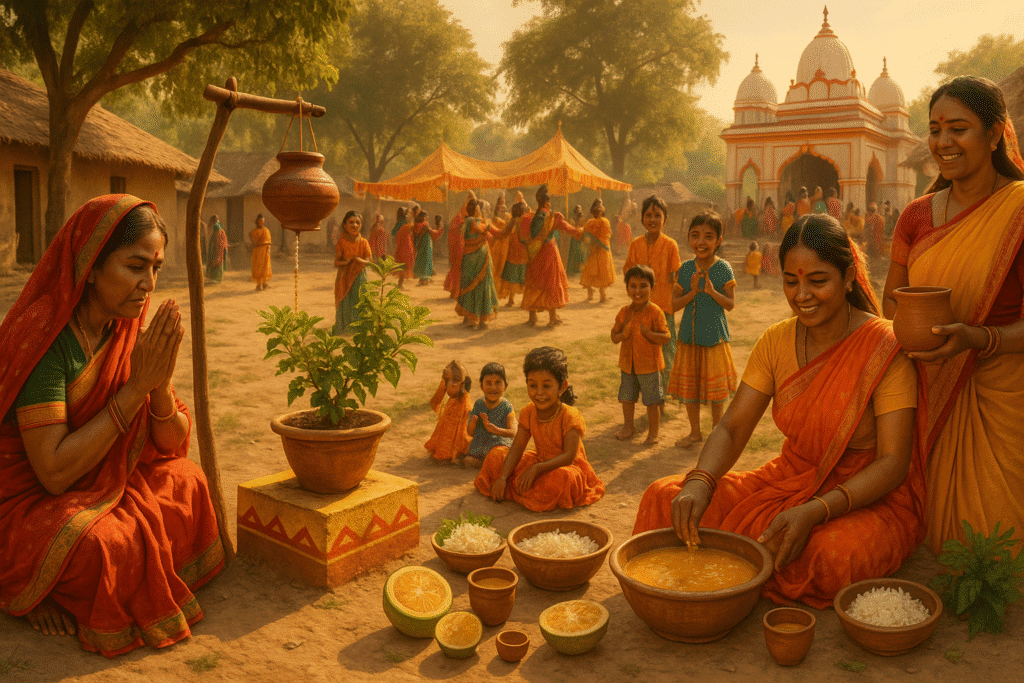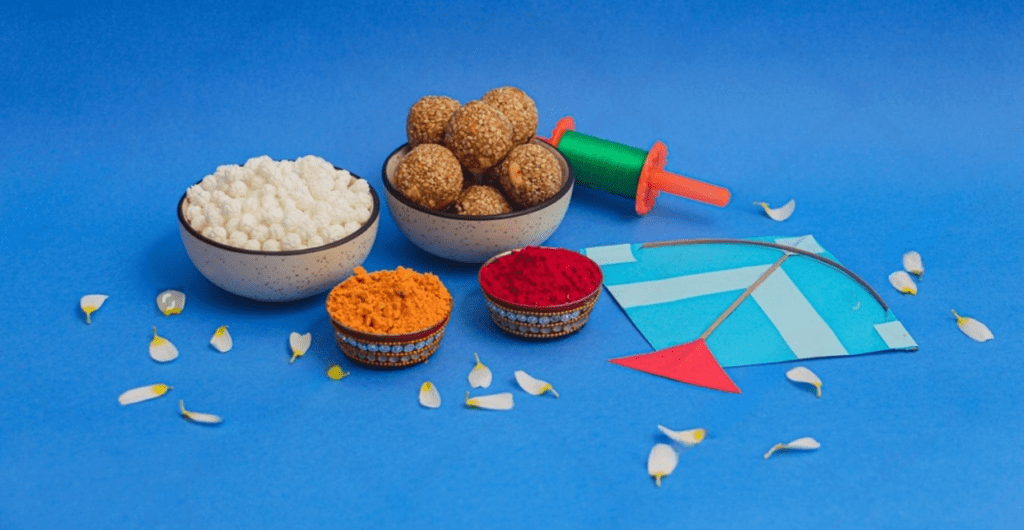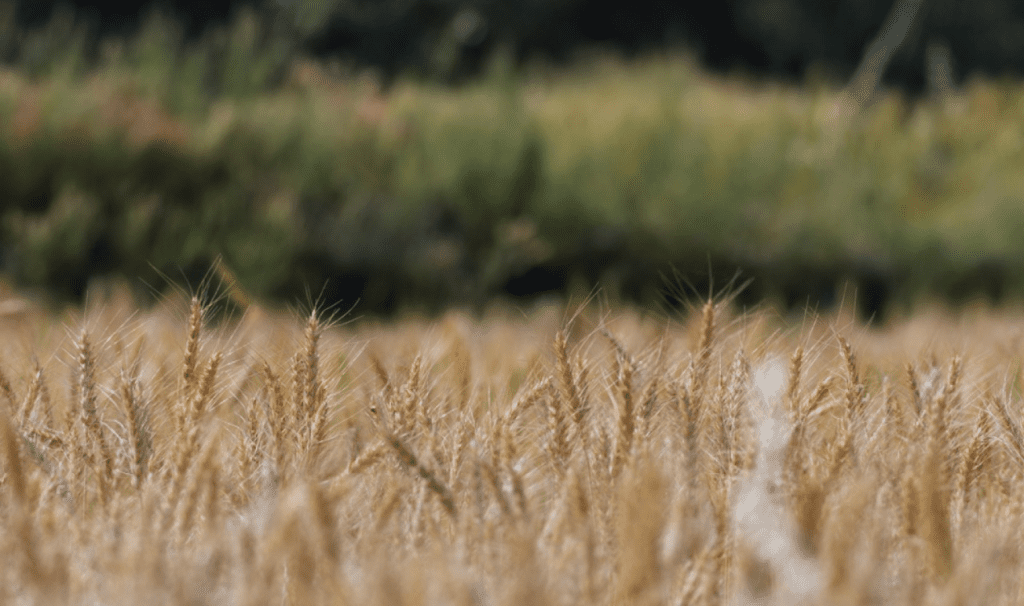Introduction: A Festival of Renewal and Unity
Pana Sankranti, also known as Maha Bishuba Sankranti, heralds the traditional Odia New Year in Odisha, India. Celebrated with fervor, this festival marks the sun’s transition into the Mesha (Aries) zodiac, aligning with the first day of the solar month of Baisakha. Falling on April 13 or 14 each year, Pana Sankranti is a vibrant tapestry of cultural, spiritual, and communal traditions. Named after the refreshing “pana” drink, the festival symbolizes renewal, community bonding, and gratitude for nature’s bounty. This article explores the historical roots, rituals, culinary delights, and cultural significance of Pana Sankranti, offering a glimpse into Odisha’s rich heritage.
Historical and Astrological Significance
Roots in Ancient Traditions
Pana Sankranti’s origins trace back to ancient agricultural practices and Odisha’s deep spiritual connection to the Hindu solar calendar. The festival coincides with Mesha Sankranti, when the sun enters Aries, marking the start of the new agricultural cycle. Historically, it is linked to Lord Vishnu’s Varaha avatar, believed to have rescued Earth from the demon Hiranyaksha on this day. Additionally, Odia tradition celebrates Pana Sankranti as the birthday of Lord Hanuman, revered for his devotion in the Ramayana, adding a layer of spiritual significance.
The Odia Panjika: A Celestial Guide
A hallmark of Pana Sankranti is the release of the new Panjika, the Odia almanac. Unlike lunar-based calendars, the Panjika follows the solar calendar, detailing auspicious dates, planetary movements, and festival timings from Mesha Sankranti to Mina Sankranti. This almanac guides religious and cultural events, reflecting Odisha’s blend of astronomy and spirituality. The Panjika’s introduction during Pana Sankranti underscores the festival’s role as a temporal and spiritual reset.
Rituals and Traditions: A Spiritual Awakening
Basundhara Theki: Nurturing the Sacred Tulsi
One of the most poignant rituals of Pana Sankranti is Basundhara Theki. An earthen pot with a small hole at the bottom, filled with water or pana, is hung above a Tulsi (holy basil) plant. As water drips slowly onto the plant, it symbolizes prosperity and reverence for nature. In Odia folklore, Tulsi is considered an incarnation of Maa Vrindavati, blessed by Lord Shiva. This ritual, performed daily for a month, ensures the plant’s soil remains moist, reflecting devotion and environmental harmony.
Temple Visits and Devotional Offerings
Pana Sankranti is marked by visits to temples dedicated to Lord Hanuman, Shiva, Surya, and Devi. Devotees throng sacred sites like the Taratarini Temple in Ganjam, Sarala Temple in Jagatsinghpur, and the Jagannath Temple in Puri, offering prayers for prosperity and health. Special rituals, such as fire-walking at Sarala Temple (Jhaamu Yatra) and Patua Yatra at Maa Patana Mangala Temple in Bhadrak, showcase physical endurance as acts of devotion. In Puri, traditional wrestlers emerge from Akhadas to display their skills after honoring Lord Hanuman, blending spirituality with community pride.
Charitable Acts and Boita Bandana
The festival fosters generosity through acts of charity, such as distributing food, clothes, and pana to the needy. In coastal Odisha, Boita Bandana commemorates the region’s maritime heritage, with miniature boats made of banana bark floated in rivers and ponds. These rituals embody gratitude, compassion, and a connection to Odisha’s historical trade routes.
The Heart of Pana Sankranti: The Pana Drink
Bela Pana: A Divine Elixir
At the core of Pana Sankranti is the preparation and sharing of pana, a cooling beverage that gives the festival its name. Bela Pana, made from ripe bael (wood apple) pulp, jaggery, bananas, grated coconut, and spices, is the most iconic variant. According to tradition, Lord Jagannath created this drink to combat summer heat, and it is offered as prasad in temples. The bael fruit, sacred to Lord Shiva, is prized in Ayurveda for its cooling and digestive properties, making Bela Pana both a spiritual and health-conscious offering.
Variations of Pana
Pana recipes vary across households and regions. Mango Pana (Keri Pana) incorporates raw mango for a tangy twist, while Chenna Pana uses soft cottage cheese for creaminess. Khai Pana, made with puffed rice, and Chhatua Pana, using roasted gram flour, cater to quick preparation for large gatherings. These variations highlight Odisha’s culinary diversity and the festival’s emphasis on hydration during the scorching April heat. Communities set up Jala Chatra (water points) to distribute pana, ensuring travelers and locals stay refreshed.
Cultural Performances: A Celebration of Art and Endurance
Danda Nata: A Dance of Devotion
Danda Nata, a 13-day ritual dance performed by Danduas, is a highlight of Pana Sankranti. Beginning in Chaitra, this ancient art form involves rigorous physical feats, including walking on hot coals and dipping in water (Jala Danda). Dedicated to Goddess Kali and Lord Shiva, Danda Nata is believed to cleanse sins and usher in prosperity. The festival concludes on Pana Sankranti, also called Meru Sankranti, with vibrant performances that draw crowds.
Jhama Nata and Community Melas
Ghantapatuas, male folk artists dressed in women’s attire, perform Jhama Nata, a playful yet skillful dance-acrobatic act. Village melas (fairs) buzz with cultural activities, including kite flying, folk music, and street performances. These events foster community spirit, with food stalls offering traditional Odia delicacies like Kanika (sweet rice), Dalma (lentil-vegetable stew), and Chhena Poda (baked cheese dessert).
Culinary Delights: Feasting on Tradition
Pana Sankranti feasts reflect Odisha’s agrarian roots and seasonal abundance. A typical meal includes rice paired with curries like Aloo Potol Subzi (potato-pointed gourd curry) and Dalma, a hearty lentil-vegetable dish. Desserts like Chhena Poda and Rasabali add sweetness to the celebrations. The sharing of Bela Pana and Chhatua (a mix of horse gram flour, curd, and banana) offered to Tulsi plants reinforces the festival’s focus on communal dining and gratitude for the harvest.
Pana Sankranti’s Broader Context
A Shared Solar New Year
Pana Sankranti is part of a broader tapestry of solar New Year festivals across South and Southeast Asia, such as Vaisakhi (Punjab), Bohag Bihu (Assam), Pohela Boishakh (West Bengal), and Puthandu (Tamil Nadu). These celebrations, rooted in the Hindu-Buddhist solar calendar, highlight shared cultural threads from the 1st millennium CE. Unlike lunar-based New Years like Ugadi or Gudi Padwa, Pana Sankranti’s solar alignment underscores its universal appeal among Odia Hindus and Buddhists.
Modern Celebrations and Global Reach
In modern times, Pana Sankranti has transcended Odisha’s borders, with Odia diaspora communities celebrating in cities like Mumbai and Delhi. Social media platforms amplify the festival’s vibrancy, with families sharing pana recipes and greetings. Despite challenges like pandemics or urbanization, the festival retains its essence, adapting with virtual pujas and community-driven charity initiatives.
Conclusion: A Timeless Celebration
Pana Sankranti is more than a New Year festival; it is a celebration of Odisha’s soul. From the sacred drip of Basundhara Theki to the refreshing taste of Bela Pana, every ritual and tradition weaves together faith, culture, and community. As Odias welcome the new agricultural year, they honor their ancestors, deities, and the land that sustains them. In its vibrant melas, devotional dances, and shared feasts, Pana Sankranti embodies hope, unity, and the promise of new beginnings. As we raise a glass of pana, let us toast to Odisha’s enduring legacy and the joy of starting anew.



